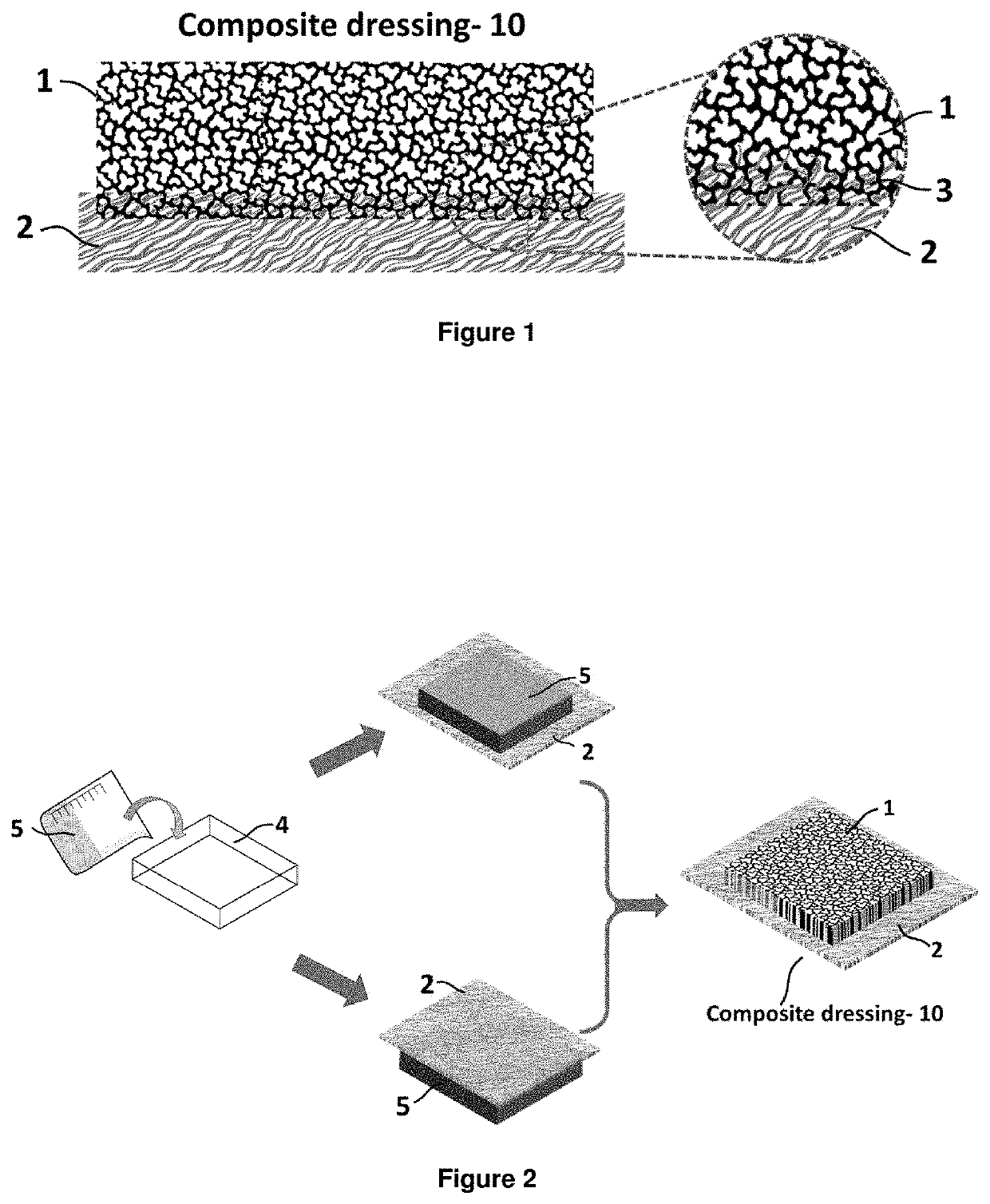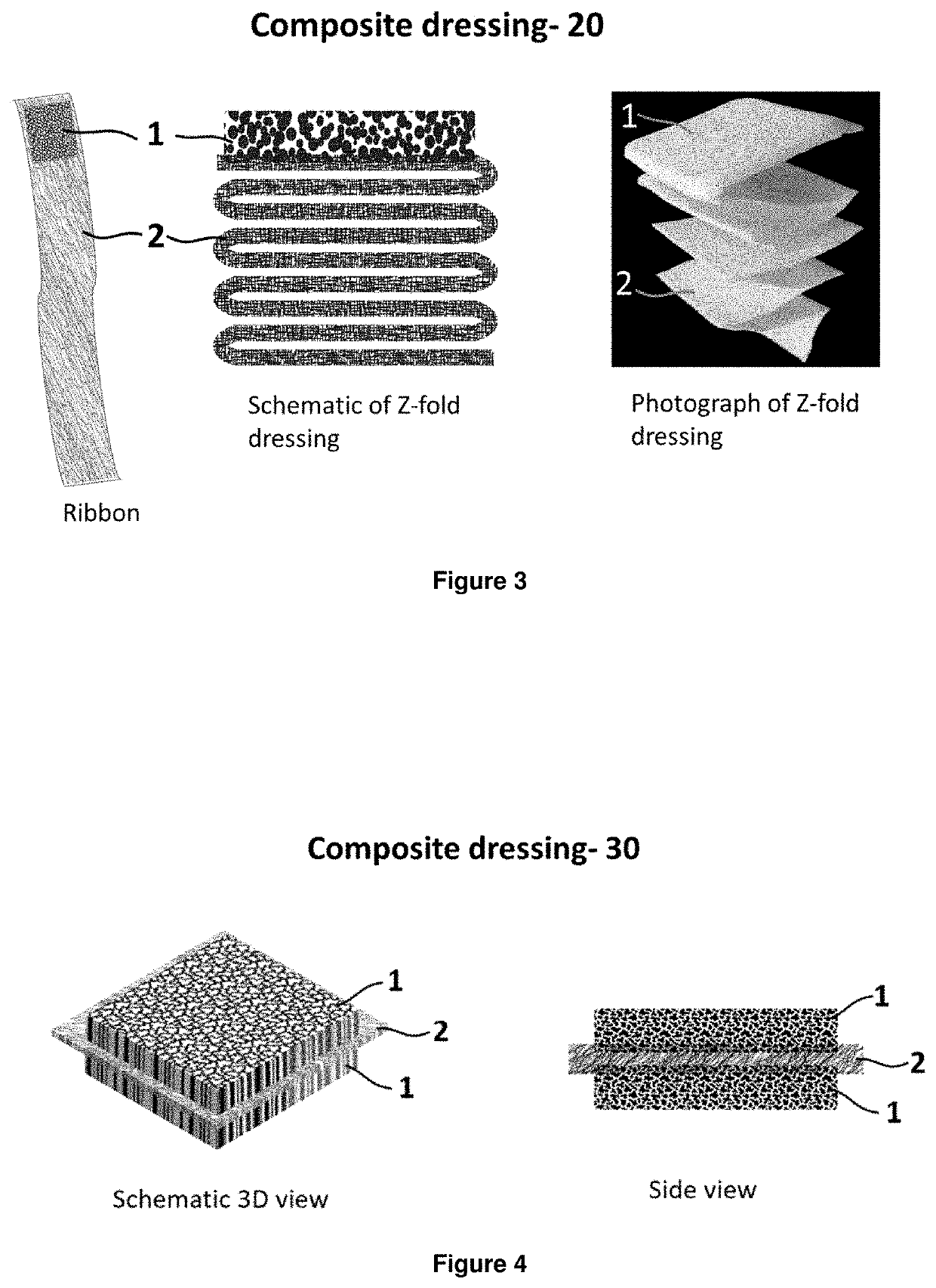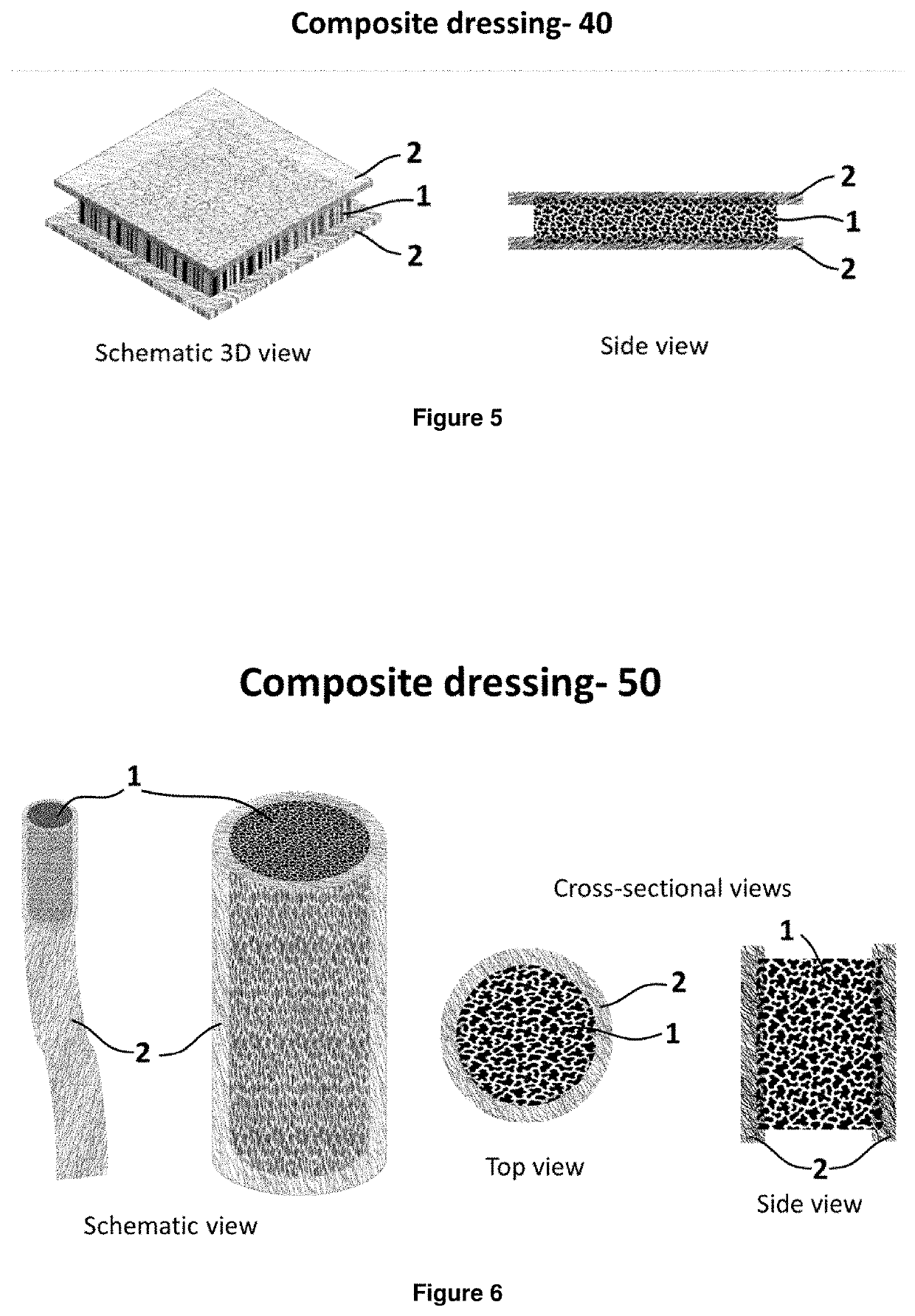Composite dressings, manufacturing methods and applications thereof
a composite dressing and manufacturing method technology, applied in the field of medical dressings and wound management, can solve the problems of limited absorption capacity, high cost, and inability to be widely used, and achieve the effect of strong bioadhesion and easy removal
- Summary
- Abstract
- Description
- Claims
- Application Information
AI Technical Summary
Benefits of technology
Problems solved by technology
Method used
Image
Examples
example 1
on of 100% Chitosan Composite Dressings
[0271]The two layers of the 100% chitosan composite dressing are a chitosan foam (sponge) and chitosan gauze (fabric). The preparation of composite dressing of the present disclosure involves following steps:
Step i: Preparation of Chitosan Solution
[0272]A chitosan solution was prepared by dissolving chitosan powder or flakes of molecular weight about 400 kDa (ChitoClear, obtained from PRIMEX EHF, Oskarsgata 7, 580 Siglufjordur Iceland) in about 0.75% v / v aqueous acetic acid, such that the final chitosan concentration in the solution was about 2% w / v. Viscosity of the solution was maintained at >1000 cP by adjusting the chitosan and / or acid concentration.
Step ii: Preparation of Fabric Substrate
Step ii. a: Pre-Treatment of Ready-Made Chitosan Gauze
[0273]A chitosan gauze was selected as fabric substrate. As the chitosan gauze was made up of 100% chitosan, it had a tendency to dissolve in presence of dilute acidic solution such as the chitosan solu...
example 2
ization of the 100% Chitosan Composite Dressing
[0287]The chitosan based composite dressing obtained using aforesaid method comprising fabric substrate pre-treated by dip-coating with 1% Polysorbate 20 was characterized to evaluate their internal structure, fluid absorbency, mechanical properties and hemostatic ability.
[0288]a) Characterization of Internal Structure of Composite Dressings
[0289]The internal structure of the composite dressing was observed using the scanning electron microscopy (SEM). The results are shown in FIG. 7a, wherein the SEM micrographs clearly showed the distinct porous matrix bonded to a chitosan gauze layer. The pore size of the chitosan sponge was between about 10 μm-300 μm and the average pore size was about 100 μm. The wall thickness of the porous matrix was at least 1 μm.
[0290]The gauze layer of the composite dressing appeared intact, with its fibers embedded within the porous matrix of chitosan. The thickness of the bonding was ranging from about 0.1 m...
example 3
of the Effect of a Combination of Fabric Substrate and Porous Matrix on Characteristics of the Dressing
[0299]Preparation and characterization of chitosan sponges without a fabric support:
[0300]A chitosan solution was prepared by dissolving chitosan powder (2% w / v) in dilute acetic acid solution (0.75% w / v). The chitosan solution was then poured into stainless steel moulds and lyophilized as described in Example 1.
[0301]The chitosan sponges without the fabric substrate were characterized for their dry and wet tensile strength, absorbency and wet integrity testing under simulated clinical use, and compared with corresponding parameters of the composite dressing of the present disclosure (table 4).
[0302]The dressings (chitosan sponges with and without fabric substrate) of dimension 5×5 cm were immersed in 100 ml of saline for 5 minutes and allowed to swell completely. The excess saline was then squeezed out by pressing with fingers. The photographs of these dressings are depicted in FI...
PUM
| Property | Measurement | Unit |
|---|---|---|
| temperature | aaaaa | aaaaa |
| thickness | aaaaa | aaaaa |
| thickness | aaaaa | aaaaa |
Abstract
Description
Claims
Application Information
 Login to View More
Login to View More - R&D
- Intellectual Property
- Life Sciences
- Materials
- Tech Scout
- Unparalleled Data Quality
- Higher Quality Content
- 60% Fewer Hallucinations
Browse by: Latest US Patents, China's latest patents, Technical Efficacy Thesaurus, Application Domain, Technology Topic, Popular Technical Reports.
© 2025 PatSnap. All rights reserved.Legal|Privacy policy|Modern Slavery Act Transparency Statement|Sitemap|About US| Contact US: help@patsnap.com



